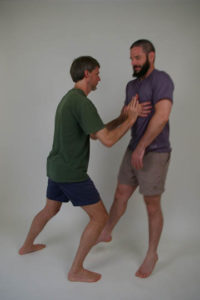T’ai Chi Chuan is a Chinese martial art that many people practice primarily for health and fitness. The curriculum includes empty handed and weapons forms that are practiced slowly and smoothly. It feels really good and is very centering.
In the first stages of practice, the benefits enjoyed by the student include improvements in balance and coordination as well as an overall reduction of stress. This first stage, of memorizing a 12 minute sequence of movements, typically involves 24 – 40 hours of instruction and 30 – 40 hours of practice. Individual pace, of course, is impacted by the variables of prior experience with movement arts, commitment and innate ability.
Once the form is memorized, the student deepens into his or her understanding of the fundamental principles of T’ai Chi. These include the practice of dynamic relaxation (using the minimum amount of effort required to achieve the desired result) and the Taoist principle of following the natural flow. At this stage, students typically notice an increase in the harmony enjoyed in their relationships with themselves and others.

Ongoing T’ai Chi practice includes the study of “push-hands”, a two person practice involving sensing the other person’s center of gravity and balance while staying solidly in one’s own. This practice is profoundly psychological in its impact, offering the student an opportunity to study his/her comfort with experiencing his/her own vulnerability in interaction with another. Push-hands provides a forum for the psychological work of studying boundaries, aggression and yielding while also doing the spiritual work of building profound sensitivity to self and other, refining the ego, and cultivating honest humility.
T’ai Chi’s roots extend thousands of years to the philosophies of ancient China although the modern version of the Yang style is only a couple hundred years old. United in the T’ai Chi form are threads from ancient shamanic and Taoist tradition, and Chinese medicine, as well as the more martially oriented material. There are several different styles of T’ai Chi, all sharing the same philosophical roots. Each teacher also has his or her orientation to the material. Since practicing T’ai Chi can serve many purposes, I want to discuss some of these aspects to clarify what is available and my particular orientation.
